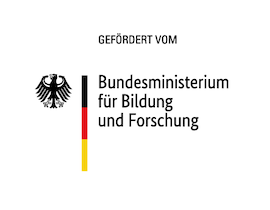
Planetary Boundaries are defined for the nine biophysical systems and processes that regulate the functioning of life support on Earth, and ultimately the stability and resilience of the Earth system. The scientifically defined boundary levels collectively define the safe operating space of the Earth system. Transgressing or overshooting one or more of the nine interconnected planetary boundaries leads to increasing risk, uncertainty, and ultimately a high-risk zone where destabilization of Earth’s key systems can occur. Currently, we have transgressed seven of the nine planetary boundaries, so monitoring them is more important than ever.
To tackle these challenges, the Potsdam Institute for Climate Impact Research and its partners have launched Planetary Boundaries Science (PBScience). This major scientific effort will improve our ability to observe and model how the Earth system evolves under the pressure of human activity — providing regular, global measurements at high resolution. At the heart of this effort is the Planetary Boundaries Science Lab.
The Lab leads the production of the Planetary Health Check report, an annual report on the state of Earth’s Health that highlights the latest science findings and updates the current state and risk level of each of the nine Planetary Boundaries. The report is authored and reviewed by a diverse international scientific community, and employs cutting-edge Earth system and tipping-point modelling, ambitious whole-Earth monitoring, and thorough literature synthesis. We aim to make the relevant global and local insights, as well as the underlying observational data and modelled outcomes, accessible to all — to enable positive change, and work towards a return to the safe operating space.
Publications
Planetary Health Check report 2025
Translations of the executive summary
News and Updates
2025/Q3 - PBI Newsletter [PDF]
2025/Q2 - PBI Newsletter [PDF]
2025/Q1 - PBI Newsletter [PDF]
2024/Q3-4 - PBI Newsletter [PDF]
Image Assets
Project Lead
Project Coordination
The second annual Planetary Health Check report was officially launched on 24th September 2025. This assessment of our planet's health presents the most up-to-date Planetary Boundaries science. In focus this year: Our ocean, and the role it plays in the Earth's stability and habitability. Further spotlights include an investigation of recent extreme weather events, and a landscape overview of efforts to put Planetary Boundary science into action. Please visit the report's official website, planetaryhealthcheck.org, for further science content, news, and downloads concerning the Planetary Health Check.
The state of the planet concerns every citizen on Earth. The PBScience Lab is also working closely with the Planetary Guardians — a collective of activists, business leaders, and former heads of state who have come together to bring evidence-based science to a global audience. All of them are striving to bring Planetary Boundaries science, with its whole-Earth view on sustainability and powerful calls to action, to their audiences.






